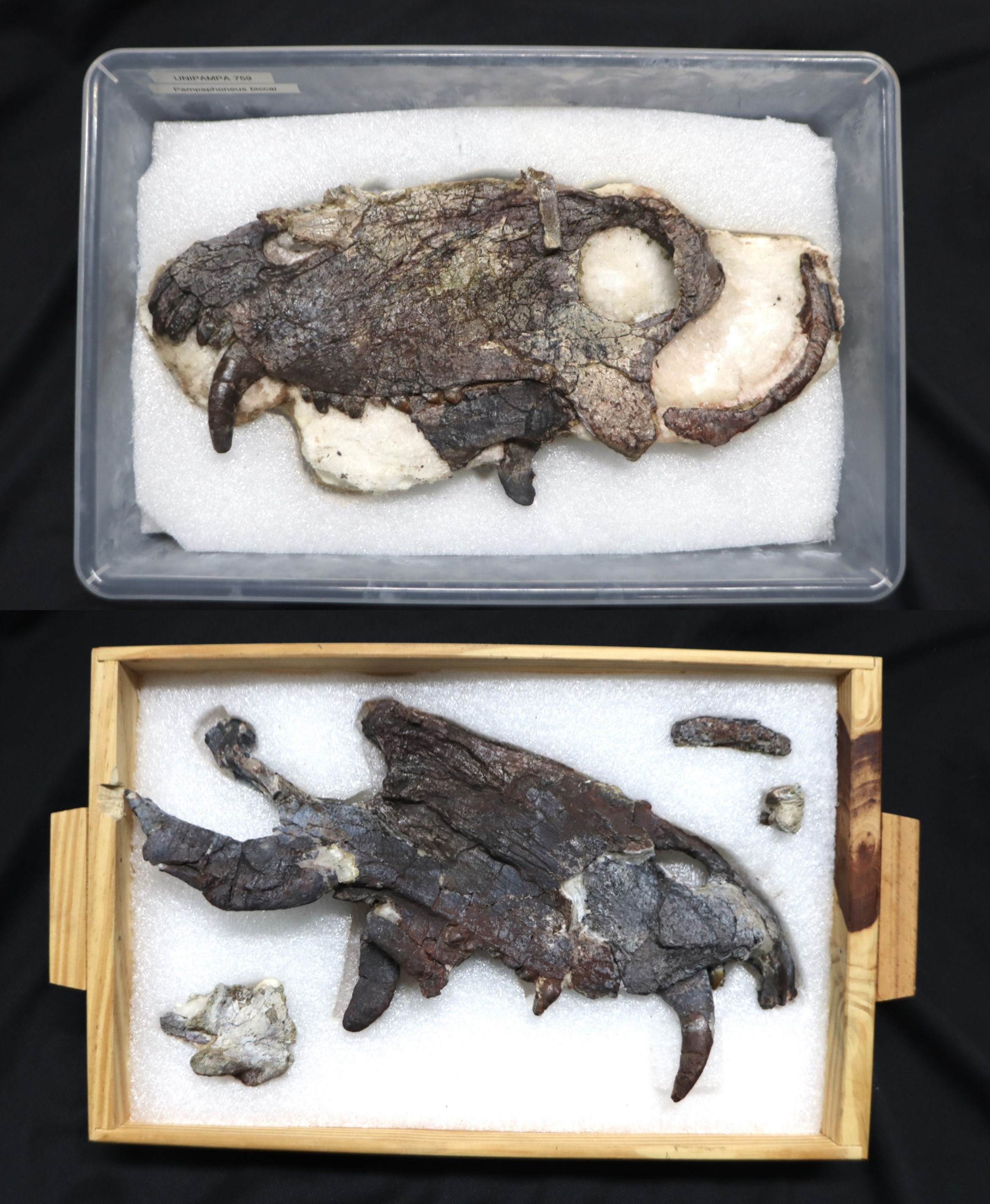Perhaps we have Jurassic Park to blame for giving dinosaurs like the Tyrannosaurus rex and Spinosaurus the biggest and most badass reputations. However, 40 million years before dinosaurs were roaming the Earth, Pampaphoneus biccai, an enormous carnivore from South America, was the most vicious creature on the planet.
An outstanding discovery of a 265 million-year-old, beautifully preserved fossil has been made in Brazil. Consisting of the skull and some ribs and arm bones, these incredible finds belonged to Pampaphoneus biccai, which was a top predator just before the extinction event that wiped out 86 percent of animal species worldwide.
Pampahoneus belonged to a group called the dinocephalian, a major group of large animals that lived on the land. The name comes from the Greek meaning “terrible head”, owing to the thick cranial bones found within this clade. Fossils from this clade have been found in Russia and South Africa, but are relatively rare across South America.
“The fossil was found in middle Permian rocks, in an area where bones are not so common, but always hold pleasant surprises,” said lead author Mateus A. Costa Santos, a graduate student in the Paleontology Laboratory at the Federal University of Pampa (UNIPAMPA), in a statement. “Finding a new Pampaphoneus skull after so long was extremely important for increasing our knowledge about the animal, which was previously difficult to differentiate from its Russian relatives.”
Due to delays from the COVID pandemic, it took over three years for the fossil to be cleaned and studied. The new fossil is only the second ever Pampaphoneus skull found in South America, and is the bigger of the two. Estimates by the team suggest that the animal would have reached 3 meters (9.8 feet) in length and weighed around 400 kilograms (881 pounds). To put that in perspective, the largest living big cat in the world, the Siberian tiger, weighs roughly 300 kilograms (660 pounds).

Large eye sockets and huge teeth can help tell us about the kind of predator Pampaphoneus biccai was.
Image credit: Felipe Pinheiro
The skull possesses sharp canine teeth, and the study suggests it would have had enough power in its bite to crush bones. Said to have fulfilled a similar ecological niche to big cats, it was a skilled predator capable of hunting potential prey such as the small dicynodont Rastodon, and the giant amphibian Konzhukovia.
“This animal was a gnarly-looking beast, and it must have evoked sheer dread in anything that crossed its path,” said Pierce. “Its discovery is key to providing a glimpse into the community structure of terrestrial ecosystems just prior to the biggest mass extinction of all time. A spectacular find that demonstrates the global importance of Brazil’s fossil record.”
The discovery of the Pampaphoneus fossil along with the possible prey species suggest that the Pampa region has potential for more fascinating palaeontological finds to come.
The study is published in the Zoological Journal of the Linnean Society.
Source Link: 265 Million-Year-Old Fossil Belonged To Huge Predator That Lived Before The Dinosaurs